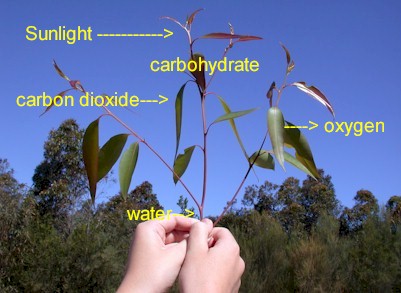

Ephedra sp. 'Mormon Tea'
I. Features of Plants and Their Products
A. What are plants?
1. evolutionary history of plants
animals: "nitrogen rich, carbon poor"
plants: "carbon rich, nitrogen poor"
2. cellular properties
(cell walls, chloroplasts, central vacuole)
a. Cell wall
-advantages of wall
regulation of water uptake
-human benefits
b. chloroplasts
The leaf as a solar panel
-thylakoids (grana)
-What happens when light strikes a molecule of chlorophyll?
-summary of light reactions and Calvin Cycle
-summary of photosynthesis

-human benefits
c. Vacuole
-functions
1. Roots
a. germinating seedling
-external views: seed root hairs1
-internal view
xylem & phloem
b. tap roots and fibrous roots
c. Other variations beetroot
2. Stems
a. types
-corm
3. Leaves
a. leaf arrangements; simple or compound
b. functions
-light absorption (Solar tracking heliotropism)
-gas exchange (stomates) stomates2
c. leaf modifications
-bulb
4. Flowers
a. main function
-why do flowers smell and look good?
c. How are gametes formed?
d. How do pollen and egg get together?
- pollination
pollinators
selfing vs cross pollination
-fertilization
double fertilization
growth of the zygote leads to seed formation
gymnosperm vs angiosperm (1) (2)
e. What is the difference between a fruit and a vegetable?
f. Why do flowering plants produce fruits?
digestive tract scarification and distribution of mesquite acacia